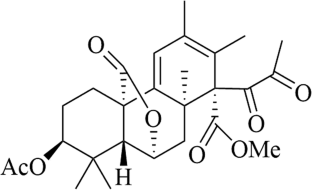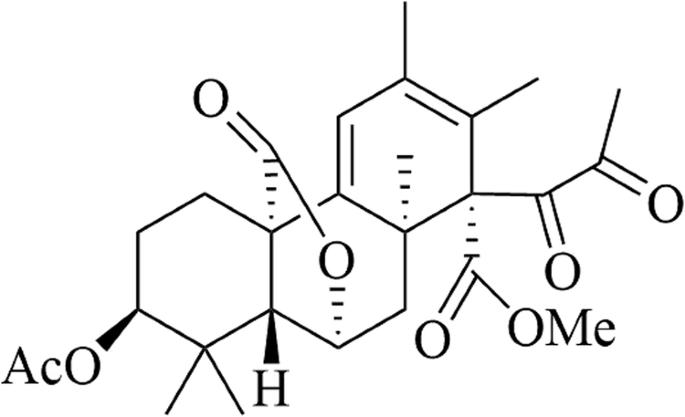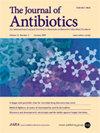The influence of marine fungal meroterpenoid meroantarctine A toward HaCaT keratinocytes infected with Staphylococcus aureus
IF 2.1
4区 医学
Q3 BIOTECHNOLOGY & APPLIED MICROBIOLOGY
引用次数: 0
Abstract
A new biological activity was discovered for marine fungal meroterpenoid meroantarctine A with unique 6/5/6/6 polycyclic system. It was found that meroantarctine A can significantly reduce biofilm formation by Staphylococcus aureus with an IC50 of 9.2 µM via inhibition of sortase A activity. Co-cultivation of HaCaT keratinocytes with a S. aureus suspension was used as an in vitro model of skin infection. Treatment of S. aureus-infected HaCaT cells with meroantarctine A at 10 µM caused a reduction in the production of TNF-α, IL-18, NO, and ROS, as well as LDH release and caspase 1 activation in these cells and, finally, recovered the proliferation and migration of HaCaT cells in an in vitro wound healing assay up to the control level. Thus, meroantarctine A is a new promising antibiofilm compound which can effective against S. aureus caused skin infection.


海洋真菌美仑塔辛 A 对受金黄色葡萄球菌感染的 HaCaT 角质细胞的影响
研究发现了海洋真菌美仑塔辛 A 的一种新生物活性,它具有独特的 6/5/6/6 多环系统。研究发现 Meroantarctine A 能通过抑制分类酶 A 的活性显著减少金黄色葡萄球菌生物膜的形成,IC50 为 9.2 µM。将 HaCaT 角质细胞与金黄色葡萄球菌悬浮液共同培养作为皮肤感染的体外模型。用 10 µM 的美罗安他克汀 A 处理被金黄色葡萄球菌感染的 HaCaT 细胞,可减少这些细胞中 TNF-α、IL-18、NO 和 ROS 的产生,并减少 LDH 的释放和 caspase 1 的激活,最后在体外伤口愈合试验中使 HaCaT 细胞的增殖和迁移恢复到对照水平。因此,美罗安亭 A 是一种新型的抗生物膜化合物,可有效对抗金黄色葡萄球菌引起的皮肤感染。
本文章由计算机程序翻译,如有差异,请以英文原文为准。
求助全文
约1分钟内获得全文
求助全文
来源期刊

Journal of Antibiotics
医学-免疫学
CiteScore
6.60
自引率
3.00%
发文量
87
审稿时长
1 months
期刊介绍:
The Journal of Antibiotics seeks to promote research on antibiotics and related types of biologically active substances and publishes Articles, Review Articles, Brief Communication, Correspondence and other specially commissioned reports. The Journal of Antibiotics accepts papers on biochemical, chemical, microbiological and pharmacological studies. However, studies regarding human therapy do not fall under the journal’s scope. Contributions regarding recently discovered antibiotics and biologically active microbial products are particularly encouraged. Topics of particular interest within the journal''s scope include, but are not limited to, those listed below:
Discovery of new antibiotics and related types of biologically active substances
Production, isolation, characterization, structural elucidation, chemical synthesis and derivatization, biological activities, mechanisms of action, and structure-activity relationships of antibiotics and related types of biologically active substances
Biosynthesis, bioconversion, taxonomy and genetic studies on producing microorganisms, as well as improvement of production of antibiotics and related types of biologically active substances
Novel physical, chemical, biochemical, microbiological or pharmacological methods for detection, assay, determination, structural elucidation and evaluation of antibiotics and related types of biologically active substances
Newly found properties, mechanisms of action and resistance-development of antibiotics and related types of biologically active substances.
 求助内容:
求助内容: 应助结果提醒方式:
应助结果提醒方式:


